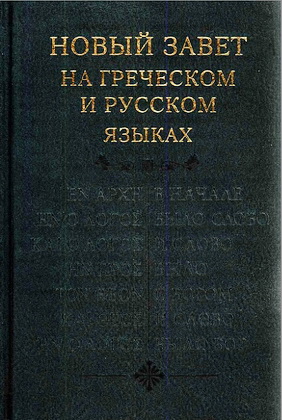
Wilson - A Dictionary of Bible Types - словарь BibleQuote
Walter L. Wilson - A Dictionary of Bible Types
Published by Baker Books a division of Baker Publishing Group
Ebook edition created 2013
ISBN 978-1-4412-3684-5
Because typology is a subject of much discussion and because there are differences of opinion concerning the meaning of types, it has seemed best to divide the material in this book into three groups.
The passages marked with the letter (a) are pure types, plainly described as such and referred to as such in the Scripture. There is no question about them.
Those marked (b) seem to be types because of their use and because the evident meaning they convey.
Those marked (c) are passages in which there may be a question as to whether or not they are types. The descriptions given of these passages are offered only as suggestions of lessons which may be learned from them. The writer claims no superior knowledge whatever in regard to their meaning and will be quite happy for others to have their own thoughts about them. There will be no spirit of criticism in the matter.
Sometimes a number of separate words are used to describe more or less the same thing. These have been designated as types, symbols, signs, shadows, representations, pictures, figures and patterns, in order to make them more lucid for the average reader. The author has refrained from making final decisions in these passages under class (c) and has left it to the student to settle in his or her own mind as he or she pursues their study.
In presenting this compendium of types, shadows, signs and symbols, an effort has been made to furnish, for the Bible student, a fairly complete explanation of the Scripture passages. I realize that the descriptions do not fully cover the subject, for the Word of God is boundless, limitless and measureless.
If the reader should find other symbolical meanings than those given in the book, it will be a cause for thanksgiving. If he or she should differ in his or her opinions from those herein presented, there will be no criticism. If anyone should feel that the explanations are not sufficiently clear, then I shall hope that he will add to the information given.
A proper understanding of the meanings of types in the Bible will add greatly to the understanding of the text and will greatly increase the ability and resourcefulness of the soul winner.
* * *
BEAR
Prov. 28:15 (b) This is a type of a wicked king, or an ungodly master who rules his people with cruel rigor and indicates no feeling in regard to the sufferings which he causes.
Dan. 7:5 (b) This animal is used as a type of the Medo-Persian empire which was the second great world kingdom to appear following the fall of Babylon. The bear raising itself on one side indicated that one of this dual empire was to prevail-the Median. The three ribs probably refer to the three great kings who had gone before, but now had been destroyed; Nebuchadnezzar, his son, and his grandson, Belshazzar.
Rev. 13:2 (b) This bear is a type of the Antichrist who will work quickly, slyly, smoothly, quietly and apparently with no anger or hatred even as a bear which seems to be docile upon first observance.
DARK/DARKNESS
These words are used to describe four different kinds of mental comprehension, or physical experience. In the Scriptures which are used, an attempt will be made to suggest which kind of darkness is indicated.
Matt. 22:13 (a) Here we find a tragic description of the eternal condition of those who are lost. This is “eternal darkness.” The soul who turns his back on God and rejects Jesus Christ who is the light of life enters eternity with no light and shall remain in utter darkness and outer darkness forever.
Matt. 27:45 (c) On this occasion the darkness was “actual” and “literal.” It may be taken as a warning to sinners that all of those who crucify Christ, who reject Him and turn their backs on Him will be forever in the outer dark. This same picture was given in Egypt when the plague of darkness fell upon the people. The idolators and all of those who rejected God in Egypt were enveloped in the dense darkness which could be felt while there was light in all the houses of Israel who believed God. “Mental darkness” is probably referred to in the following Scriptures: Proverbs 2:13; John 1:5; Acts 26:18; 2 Corinthians 6:14; 1 John 2:11; Isaiah 50:10. “Eternal darkness” is undoubtedly the meaning of the passage in Matthew 8:12; 25:30; Job 10:21.
For other examples of “mental darkness,” see Matthew 6:23; Psalm 69:23; Romans 1:21; 11:10; Zechariah 11:17; Job 38:2; Amos 5:18. For other examples of “spiritual darkness,” see Psalm 107:10; 112:4; Isaiah 5:20; 9:2.
Eph. 5:11 (b) This work describes “social” darkness. It refers also to social service performed by religious groups in which God and Christ and the Bible are omitted and only the welfare of human beings is considered. These works leave the beneficiaries greatly helped physically, but they remain in the dark spiritually. No light from heaven has come, no information from the Bible, and no knowledge from God (2 Pet. 1:19).
Eph. 6:12 (b) This is evidently “mental darkness,” for Satan is busy blinding the minds of them that believe not lest they should be saved. The unsaved have no true light on the Son of God and His wonderful work of Calvary. They cannot and do not understand the Bible. (See also Ephesians 5:8; Colossians 1:13.)





Комментарии
Пока нет комментариев. Будьте первым!